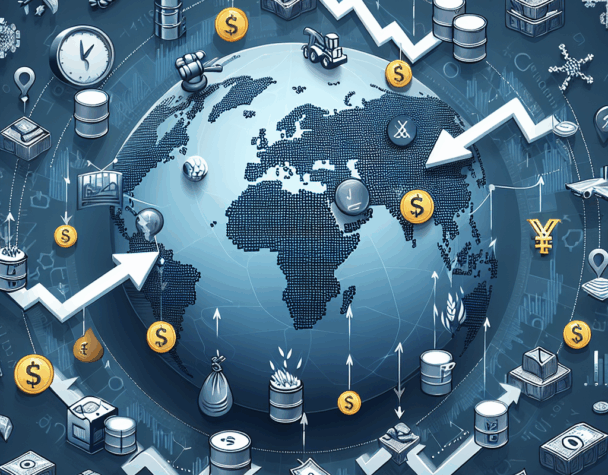
Commodity Markets Face Volatility Amid Global Economic Shifts
Sun, June 01, 2025Gold Prices Reach Record Highs Amid Economic Uncertainty
Gold prices have surged to unprecedented levels, with spot gold reaching an all-time high of $3,004.86 per ounce in March 2025. This 14% increase since the start of the year is attributed to easing U.S. inflation, a declining dollar, and geopolitical tensions. Investors are turning to gold as a safe-haven asset amid these uncertainties. Source
World Bank Forecasts Decline in Commodity Prices
The World Bank’s latest Commodity Markets Outlook predicts a significant decline in global commodity prices over the next two years. Prices are expected to drop 12% in 2025 and a further 5% in 2026, returning to pre-COVID-19 levels. This trend is driven by weakening global growth and rising trade barriers, posing challenges for developing economies reliant on commodity exports. Source
Indonesia Considers Nickel Production Cuts to Support Prices
Indonesia, the world’s largest nickel producer, is contemplating reducing nickel ore production to boost prices, which have dropped 40% in the past two years due to oversupply. The government is reviewing mining quotas to stabilize prices, balancing economic dependence on the nickel industry with the need to support local producers. Source
China’s Mixed Commodity Import Trends Reflect Economic Shifts
In 2024, China’s commodity import landscape was mixed, with record imports of iron ore, coal, and natural gas, but a decline in crude oil imports. The decrease in crude oil imports is influenced by high prices and a shift to New Energy Vehicles (NEVs), while increased imports of other commodities reflect varied economic performance and structural changes within China’s economy. Source
Commodity Trading Houses Expand Amid Market Volatility
Leading commodity trading houses—Trafigura, Vitol, Gunvor, and Mercuria—have earned over $57 billion in net profits since the onset of the 2022 energy crisis. These firms are aggressively investing these gains to expand their influence across global supply chains, diversifying into assets such as power plants, petrol stations, and biofuels, while strengthening their core oil and metals trading operations. Source
Singapore Tightens Commodity Trading Regulations
In response to multiple scandals during the COVID-19 pandemic, Singapore has enacted measures to increase transparency in its commodity trading sector. These include digitizing trade documentation and establishing a trade finance registry to prevent asset duplication. The efforts aim to rebuild credibility and maintain competitiveness against rising hubs like Dubai. Source
ADM Focuses on Cost Controls Amid Challenging Commodity Cycle
Archer-Daniels-Midland (ADM) is focusing on cost control measures as the challenging commodities cycle, characterized by low crop prices and regulatory uncertainties, is expected to persist into 2025. The global grains trader is preparing for potential shifts in trade flows and remains cautious about providing a 2025 profit forecast due to various uncertainties. Source
Commodity Market ETFs Performance
As of May 31, 2025, several commodity market ETFs have shown varied performance:
- SPDR Gold Shares ETF (GLD): $303.60, down 0.65% from the previous close.
- iShares Silver Trust (SLV): $30.00, down 1.02% from the previous close.
- United States Oil Fund (USO): $67.15, down 0.07% from the previous close.
- United States Natural Gas Fund (UNG): $15.71, down 1.72% from the previous close.
These fluctuations reflect the ongoing volatility in the commodity markets.
In summary, the global commodity markets are experiencing significant volatility due to economic shifts, policy changes, and supply chain disruptions. Investors and stakeholders should stay informed and adapt to these evolving market conditions.

